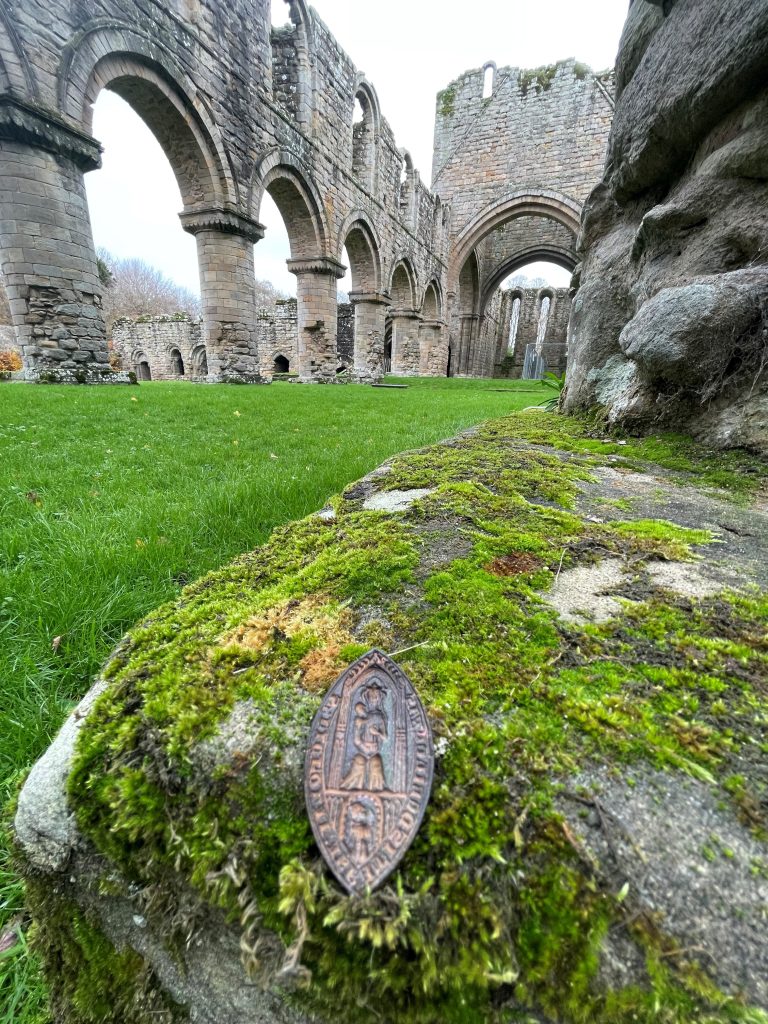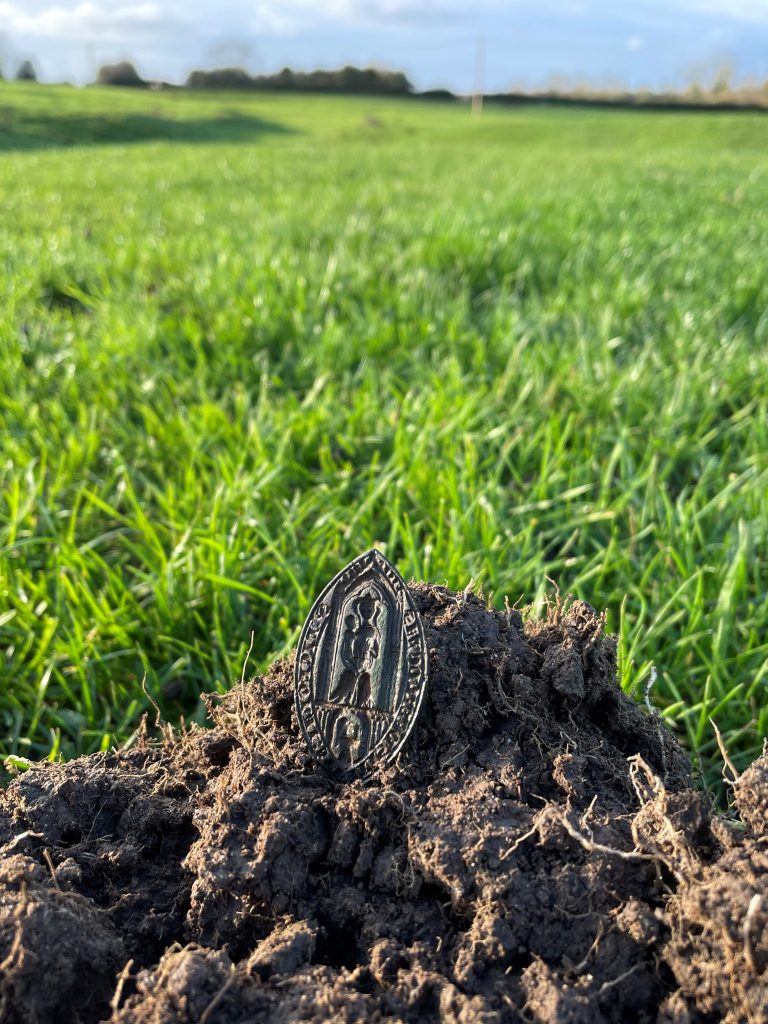Detectorist loans county treasure for show at museum and opens medieval forgery debate
Visitors to Much Wenlock Museum can learn all about a new exhibit – which may have played a part in medieval forgery – thanks to the generosity of a detectorist who made the find.
Enthusiast Steve Parker discovered the 13th century matrix seal, which has links to the Buildwas area, in November 2022 and, after reporting the find to the West Midlands Portable Antiquities Scheme, he has loaned it to Shropshire Council’s museums service for the wider public to enjoy.
The medieval seal would have been used to seal official documents and to demonstrate the owner’s authority, but research has thrown some doubt over the ‘validity’ of the seal, which depicts the Virgin Mary holding the infant Jesus and, in the lower third, the kneeling figure of a named abbot, with hands in prayer.
Susheela Burford, Portable Antiquities Scheme finds liaison officer, said:-
“It is a nice example, is 13th century in style and is inscribed stating that it is the seal of Nicholas, Abbot of the Cistercian Abbey at Buildwas.”
There appear to be at least two abbots of Buildwas called Nicholas which may match the date of the seal. One was an abbot from 1236 to 1256, and the other from 1345 to 1348.

The seal at Buildwas Abbey where it is believed it originated
Emma Kate Lanyon, Shropshire Council’s museums service curator, added:-
“The Abbey was prospering at the time this seal matrix was made, and like many Cistercian monasteries across England, it derived much of its income from the sale of fleeces from its flocks of sheep. These were traded with merchants as far afield as Flanders and Italy.
“All this activity would have meant that legal documents were regularly being drawn up and needed to be authenticated by the abbot.”
However, further research in Shropshire Archives, by Shropshire Museums volunteer and medieval specialist John Cherry, has uncovered a surviving seal of the Abbot of Buildwas, attached to a document dated 1250.
John explained:-
“This seal of the Abbot of Buildwas, is engraved with a standing figure of St Chad. This means that it is possible that the seal matrix found by Steve is a medieval forgery. This could explain why it was disposed of, rather than broken at the end of the abbacy of Nicholas.”
Steve, who found the seal, has another interpretation. He said:-
“The field I found it in is 50 miles away from Buildwas Abbey. This makes the seal more interesting to me, as why was it so far away from home.
“I don’t feel it’s a forgery, as the style of the Virgin Mary with child above the Bishop fits in with the design of 14th century Buildwas seals.
“The story I like is this: it’s recorded that the Abbey was pillaged and that the Abbott and monks were taken prisoner in around 1349/50, which is when ‘my’ Nicholas could have still been the abbot.
“I haven’t seen any exact dates of when he started or finished being the abbot, but he is mentioned in 1345 and 1348. So, does that make it a possibility? If so, was he stripped of everything, including the seal hanging around his neck, and somehow along the way it got passed around and ended up in the village where it was located and which does have a 13th century church.
“Or was it to do with the Black Death; would abbots move around helping the sick and dying?”
Robert Macey, Shropshire Council’s Cabinet member for culture and digital, said:-
“Steve has been so generous in loaning his find to our Museums Service and its early history is certainly proving to be a talking point!
“This display is a great example of how responsible metal detectorists like Steve, the Portable Antiquities Scheme and Shropshire Council can work together to help us learn more about Shropshire’s past. This item will certainly be subject to further research.”
Steve added:-
“Over the years of metal detecting I’ve found some amazing and interesting things – Saxon and Tudor hammered coins, Roman coins and fibulas, medieval buckles, silver spoons, a Georgian gold guinea – but this is my greatest find.
“To dig something from the soil that is 600 years old, and be able to find the exact person who it belonged to and to see his name documented in the history books is mindblowing to me.”
To read more about the seal click here and to learn more about the Portable Antiquities Scheme, or how to report an archaeological find, visit the scheme’s website.
Much Wenlock Museum is open Fridays to Sundays over the winter months from 10am- 4pm (closed 1pm-1.30pm). See https://www.shropshiremuseums.org.uk/much-wenlock-museum/


